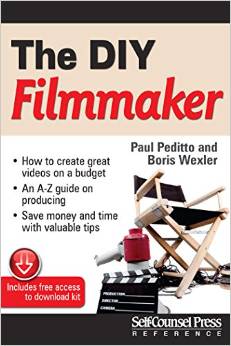“What make screenplays difficult are the things that require the most discipline and care and are just not seen by most people. I’m talking about movement — screenwriting is related to math and music, and if you zig here, you know you have to zag there. It’s like the descriptions for a piece of music — you go fast or slow or with feeling. It’s the same.” –Robert Towne
Beautiful thought from a man whose movies will be around 100 years from now. He’s talking about balance, about setups and payoffs, and about structure.
This leads us to the question of outlining. Will you outline your movie or will you not?
Outlining, for me, is a Linus Blanket. You might not need it, but you feel better with it wrapped around you. So, how does one outline? The Old School/Syd Field Method is to write out every scene of your movie on 3-by-5 index cards, place the cards on a table in sequential order, and then begin the vetting process of determining that every scene is necessary. You break it down by Act 1-2-3. Double-check the order of your scenes. Is it logical? Is it inevitable? Does it make sense? Is your movie compelling, void of fat, relentless?
I personally outline (though not in Syd Field-style, and not because Syd says I must do so). At Chicago Filmmakers or Columbia College, and with every client I work with, the screenwriter has the option to outline or not. This is about process. Your process. What process do you feel most comfortable with as a writer? Maybe you want discovery, you don’t want to know exactly what happens. One writer described it as taking a vacation and knowing not only every road you’ll drive but every twist in the road ahead of time. Some writers are more intuitive, the last thing they want to do is kill the spontaneous writing impulse by outlining.
I am not one of those writers. I need my Linus Blanket!
Maybe you have a story idea but nothing more. You’ve got the plot but no firm characters yet. Or you might have all the characters, even down to how they talk, but aren’t 100% sure about where the story should go. How should you go about outlining?
Find your strength, and write to it.
Let’s say you know the story. You know what-where-why-how things will happen. Begin by writing down—with a one or two line description–every scene that’s in your mind. It might look something like this:
This is the Final Draft outline for my screenplay CROSSROADERS. It details the opening of the movie, scene by scene. If you have screenwriting software, you can create a “card” by typing in a slugline: INT. DANNY’S ROOM- NIGHT, followed by a single line or two of the action of the scene. You don’t need any more than that, just the slugline and a single line about what will happen.
INT. DANNY’S ROOM- NIGHT
Danny finds wife Carol in bed with best friend Sal, a carton of blueberries, and a Dolly Parton video on the tube.
Danny reaches not for a gun, but a Cuban Cohiba, lighting up--His Day of Liberation is at hand.
Think of outlining as a GPS system. You’re at Point A; you need to get to Point Z. You will take multiple roads to get to the destination. You are visualizing every scene in your movie ahead of time, like you’d map the roads you’ll need to travel.
Dont’ worry if you can’t visualize the full story yet. To outline a feature-length movie will take time. It has taken me upwards of two months sometimes to fully outline a movie. Of course, after you put in the dues to see the entire movie, the actual writing of it comes much easier, sometimes in just a few weeks.
Brainstorm scenes, don’t even worry if they’re not in order. Just write ’em out. You can connect the dots later. Don’t get discouraged if you’re not seeing the big picture. This will take time. Here’s a scene outline from one of my students along the 3-Act Structure model:
This is the top of his movie about Magellan. The layout is different than the previous example, but it accomplishes the same goal: Ordering the movie in your mind before you start.
Again, this is a personal choice.You can outline. You can not. But you’ll have to decide, one way or the other. For me, I have to outline. I’ve never had writer’s block because of the dues I put in ahead of time outlining. If I get stuck on a scene, I move on to the next scene and double-back to the problematic scene later. I find, this way, there is still plenty of personal discovery within the body of each scene, even if I’ve seen the full world of the movie ahead of time.
More on this subject later…now where did I put that blanket???



